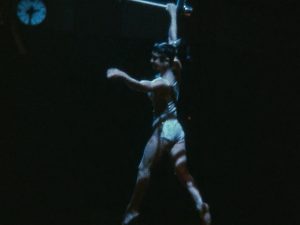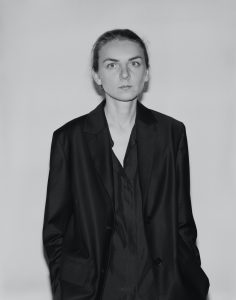The three chapters of the program seek to tease out new angles of approaching Jonas Mekas’s film works, and expose his filmic practice in the broader context of the American avant-garde scene, emphasizing the impact of Mekas’s intellectual, organizational, and administrative activities; his devotion in fostering new habits of looking at film as an art form; as well as the diversity of contexts that inspired the filmmaker. (Inesa BRAŠIŠKĖ, Lukas BRASISKIS)
Guest Programmers: Inesa BRAŠIŠKĖ, Lukas BRASISKIS
Dates: 2.4 Sat. 15:00- w/ Q&A session: Inesa Brašiškė, Lukas Brasiskis
2.10 Fri. 15:00-
2.19 Sun. 11:00-
Venue: Tokyo Photographic Art Museum 1F Hall
Ticket: ¥1,500 [advance] / ¥1,800 [door]
※Running time (e.g. of movie) 218 min. ( tentative, Including break )
Chapter 1 : 84 min.
Chapter 2 : 73 min. 30sec.
Break Time : 10 min.
Chapter 3 : 50 min.
Works
CHAPTER 1: To Write History and to Be Written into History: Documents and Portraits of the New York Avant-Garde

Jonas MEKAS, Award Presentation to Andy Warhol
1964 / 12 min. / 16mm film / sound
Collection of Tokyo Photographic Art Museum

Jonas MEKAS, Zefiro Torna, or, Scenes from the life of George Maciunas (Fluxus)
1992 / 35 min. / digital (original=16mm film) / Dialogues in English (with Japanese subtitles) / Distributed by The Film-Makers’ Cooperative

Storm de HIRSCH, Newsreel: Jonas in the Brig
1964 / 5 min. /silent/digital (original=16mm film) / Distributed by The Film-Makers’ Cooperative

Gideon BACHMANN, Jonas
1968 / 32 min. / digital (original=16mm film) / Dialogues in English (with Japanese subtitles)
Distributed by RE:VOIR
CHAPTER 2: Flâneur with a Camera
Mekas’s life and career were profoundly marked by geographical mobility. In what is likely the most celebrated body of his work, Mekas captured the feeling of homelessness – of having nowhere to go – as an existential state stemming from the traumatic experience of forced migration, and portrayed the lives of displaced persons, first and foremost the Lithuanian immigrants’ community in New York. Mobility was indeed integral to the entirety of his filmic corpus, his Bolex 16mm film camera accompanying Mekas on a daily basis as he moved through the streets, cities and continents putting those images together years later into one of his diary films. And Mekas did travel: to visit friends, but also for a much less exposed reason – to fulfill his administrative and curatorial roles. The subject of itinerancy is brought into sharp relief – in other words, it becomes the subject in a series of travelogues collectively called Travel Songs.

Jonas MEKAS, Williamsburg, Brooklyn
2003 / 15 min. / digital (original=16mm film) / silent / Distributed by The Film-Makers’ Cooperative

Jonas MEKAS, Cassis
1966 / 4 min. 30 sec. / digital (original=16mm film) / sound / Distributed by The Film-Makers’ Cooperative

Jonas MEKAS, Travel Songs
1967-1981 / 25 min. / digital (original=16mm film) / Dialogues in English (with Japanese subtitles) / Distributed by The Film-Makers’ Cooperative

Jonas MEKAS, Song of Avignon
1998 / 5 min. / digital (original=16mm film) / Dialogue in English (with Japanese subtitles)
Distributed by RE:VOIR

Jonas MEKAS, On My Way to Fujiyama, I Saw...
1996 / 25 min. / 16mm film / Sound(Dalius Naujokaitis)
Distributed by Mekas Nihon Nikki No Kai
CHAPTER 3: The Motion of Time and Eye: A Special Screening of Films by Marie MENKEN

Marie MENKEN, Glimpses of the Garden
1957 / 4 min. / digital (original=16mm film) / sound / Distributed by The Film-Makers’ Cooperative

Marie MENKEN, Notebook
1962 / 10 min. / digital (original=16mm film) /silent / Distributed by The Film-Makers’ Cooperative

Marie MENKEN, Go Go Go
1964 / 11 min. 30 sec. / digital (original=16mm film) /silent / Distributed by The Film-Makers’ Cooperative

Marie MENKEN, Lights
1966 / 6 min. 30 sec. / digital (original=16mm film) /silent / Distributed by The Film-Makers’ Cooperative

Marie MENKEN, Sidewalks
1966 / 6 min. 30 sec. / silent / Distributed by The Film-Makers’ Cooperative

Jonas MEKAS, Notes on the Circus
1966 / 12 min. / digital (original=16mm film) /sound / Distributed by The Film-Makers’ Cooperative


![[Special Screening] <br>100th Birthday Commemorative Program<br>Jonas MEKAS – Film Program in Three Chapters](https://www.yebizo.com/2023/wp-content/uploads/2023/01/others/ud/Sc_1a_-Award-Presentation-to-Andy-Warhol-_dummy.png)



